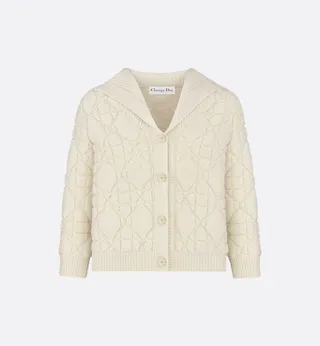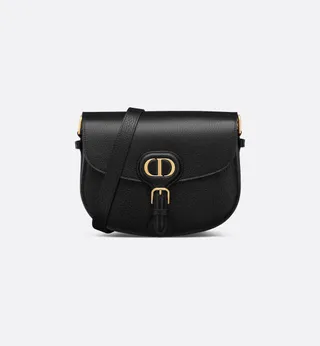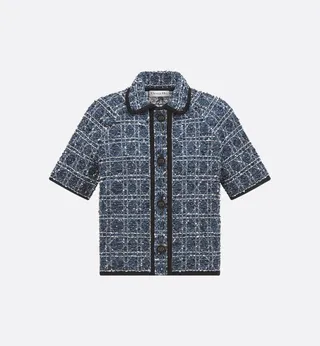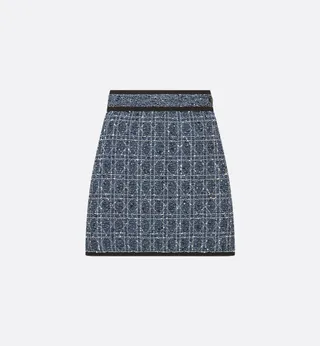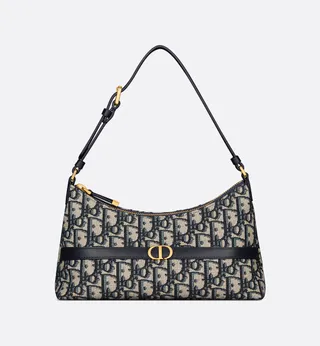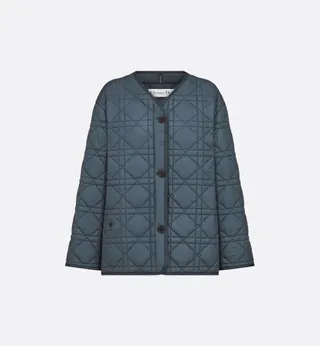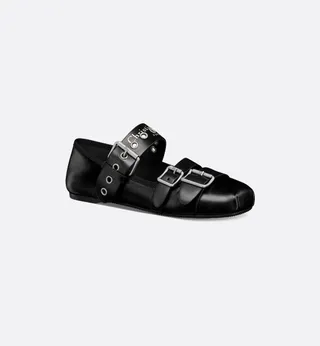How much time needs to go by or physical distance has to be covered for someone to change their perspective on something? For me it was eight years, nine months, twelve days, and 462 miles. This was the period of my life that I spent in London, bookended by growing up in and, as fate would have it, moving back to Scotland. While I always anticipated that I’d fly far from the nest, what came as much more of a surprise was the yearning that would come, years later, to re-embrace my origins.
The years I spent away from Scotland made me appreciate it as I never had before. From memories of rambling through the countryside when I’d visit my grandparents at their rural home on the weekend to windy dog walks and collecting stones on torrid beaches, I was high on the nostalgia of it in ways only someone who never quite felt at peace in their new surroundings can understand. That’s the beauty of a homecoming, isn’t it? The familiarity, yes, but also, the perspective and renewed sense of self you forge you when you return. I can imagine it was this same sentiment that ultimately enticed Dior back to Scotland earlier this year when, in June, it showcased its Cruise 2025 collection to the world from the immaculate grounds of Drummond Castle in central Perthshire.
As unassuming as our country may be on a map, Dior has long understood, embraced and heralded Scotland and the craftspeople who reside here. And while the fashion industry did an excellent job of documenting this special kinship on social media in 2024, the association between the luxury fashion house and this small country is more storied than many will know.
(Image credit: Courtesy of Dior)
Scotland and France will be forever entwined historically. Many of Scotland’s royalty were educated or even born in France and, in the 13th century, the two countries formed what would latterly be called the Auld Alliance; a union bound together by the mutual need to curtail the English expansion. Going beyond textbook learnings, the French fashion house’s founder, Christian Dior, spent much time exploring the Scottish landscape for himself, even choosing the acclaimed Gleneagles Hotel in Perthshire—one of the world’s very finest, where the brand also held an exclusive soirée after its spectacle at Drummond Castle—as the place he wanted to showcase the brand’s spring/summer collection in 1951. Four years later, in 1955, Dior would return to Gleneagles for a charity ball, which saw 172 models in attendance wear the designer’s latest creations. Inspired to deepen this already meaningful relationship, Dior’s Creative Director, Maria Grazia Chiuri, took the brand to Scotland once more, with the Cruise 2025 collection serving as a love letter to what is proving to be a lasting connection.
The need for just that, meaningful connections, is something we’re seeing more of, not just culturally, but also in terms of fashion. Looking at Dior’s Cruise 2025 collection in its tartan glory is enough to make even the most patriotic Scot beam with national pride. Still, you don’t need to have been born here to understand and appreciate the sentiment behind this exploration of our roots. In the digital age, where deciphering who you are and what you stand for is made harder by the constant noise we’re subjected to, many of us long for a more purposeful, grounded existence. And we’re seeing this mindset guide our shopping habits, too. When so much of our sense of self is channelled via clothing, it’s inevitable that more complex themes run through our garments. To get to the heart of this, I spoke with Dr Carolyn Mair CPsychol, fashion business consultant and author of The Psychology of Fashion.
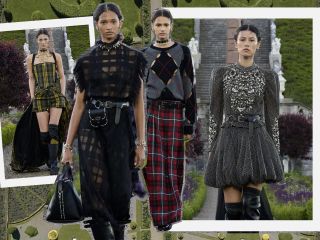
(Image credit: Courtesy of Dior)
“Dior’s Cruise 2025 collection draws heavily from the traditions, symbols, and craft Scottish heritage including bagpipes, tartan, Argyle motifs, and kilts,” observes Dr. Mair. “These features tap into the deep psychological need for connection to cultural roots and national identity, appealing to people who feel a strong sense of attachment to Scotland or the broader Celtic traditions. More generally, the emphasis on Scottish craft traditions and detailed couture embroidery taps into our psychological desires for authenticity and craftsmanship, tactile experiences, and the connection to handmade and enduring pieces. This resonates with the notion of slow fashion where consumers are increasingly seeking meaningful connections to their clothing, valuing pieces with history and narrative over mass-produced items.
“By drawing inspiration from figures like Mary, Queen of Scots, and reimagining elements that she might have worn, the collection evokes a sense of historical romanticism, thus tapping into a psychological yearning for escapism and fantasy, satisfying the emotional need to move from the mundane and embrace a more glamorous, powerful version of oneself,” continues Dr. Mair. “Strengthening this is the juxtaposition of traditional elements with punk and counter-cultural references, appealing to the desire for rebellion and autonomy by challenging societal norms. It speaks to those who find empowerment in breaking rules, blending traditional obedience with modern defiance, self-expression, and differentiation from the mainstream. This is further echoed in the accessories and garments, adorned with zips and straps, which convey strength and assertiveness, aligning with the modern construct of womanhood that values empowerment, confidence and resilience.”
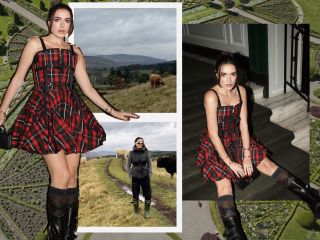
Resilience is something any person who visits Scotland will benefit from, no less in the face of our harsh winter weather. After its visit earlier in the summer, Dior returned to Gleneagles in Perthshire this October, inviting a selection of its ambassadors to experience the untameable countryside and lavish accommodation that so captivated Christian Dior for themselves and to toast the official launch of the collection. From sipping whiskey cocktails in the hotel’s iconic American Bar to hiking the Highlands in high winds and being granted access to Dior’s Cruise 2025 collection, I spoke with content creator Camila Carril about what her time spent with the brand in Scotland meant to her and the impact the collection has had on the way she gets dressed.
“Wearing the collection made me feel like I was part of a larger story, deeply connected to both place and tradition,” explains Carril. “The tartan dress immediately evoked a sense of heritage, tying the Maison to the Scottish landscape that inspired it. At the same time, I felt a surge of rebellion and empowerment, as if I was embodying both elegance and strength in one powerful statement.”
I was interested to learn whether the collection, with its punk expressionism coupled with heritage craft, made her tap into a different facet of herself and fashion sense. “Before I dive into details, let me just say Maria Grazia does not miss! The way she seamlessly blends influences and works with local artisans is pure genius. For the Dior Cruise collection, she mixed punk with romance, giving us a look that’s both timeless and daring. It’s like she’s saying, ‘Why choose?’ and ‘You can have it all’. I love that energy. This collection is proof that stepping out of your comfort zone is where the real magic happens.”

“Over the years, my style has become a reflection of the memories and influences I’ve gathered, shaped by experiences rather than trends. It’s grown into something authentic and deeply personal—an extension of who I am. Much like the Dior Cruise collection, which tells a story through a rich blend of history and influences, my style now embraces a sense of identity that’s rooted in something meaningful.”
I suggested that being in Scotland, soaking up the inspiration behind the collection, was an affirming experience for Carril, which she confirmed. “The moment I stepped foot at Gleneagles and looked out of my window, it felt like my fast-paced life came to a pause. The raw beauty of nature, the rich colours, and the crisp, fresh air—it’s grounding in a way that nothing else can be. I think that’s why we yearn for this connection—it brings us back to something real, something timeless, that we often lose touch with in our modern, hectic lives. Experiencing the story that once took place in the Gleneagles, it was like a dream. Fresh walks after a beautiful breakfast. Cocktails in the cosy bar sitting by a log fire. Dinner in a chalet sampling the best Scottish beef. I’ll remember it all forever.”
While much of the collection is available exclusively from Dior boutiques, there is a selection that the brand has placed online. Scroll on to see it and to experience a slice of Dior’s special connection with Scotland.
See Dior’s Cruise 2025 Collection:
Dr. Carolyn Mair
Dr. Carolyn Mair CPsychol. is an award-winning fashion business consultant and academic with a PhD in Cognitive Neuroscience. Her significant academic contributions have earned her the British Psychological Society’s Distinguished Contributions to Psychology Education Award, while the global success of her book, The Psychology of Fashion, has cemented her reputation as a leading expert, sought after by media and fashion businesses for her insights into human behaviour at the intersection of fashion and psychology. While she was Professor of Psychology for Fashion at London College of Fashion, University of the Arts London (2012-17), she created the world’s first Masters degrees to apply Psychology specifically in the context of fashion business.


